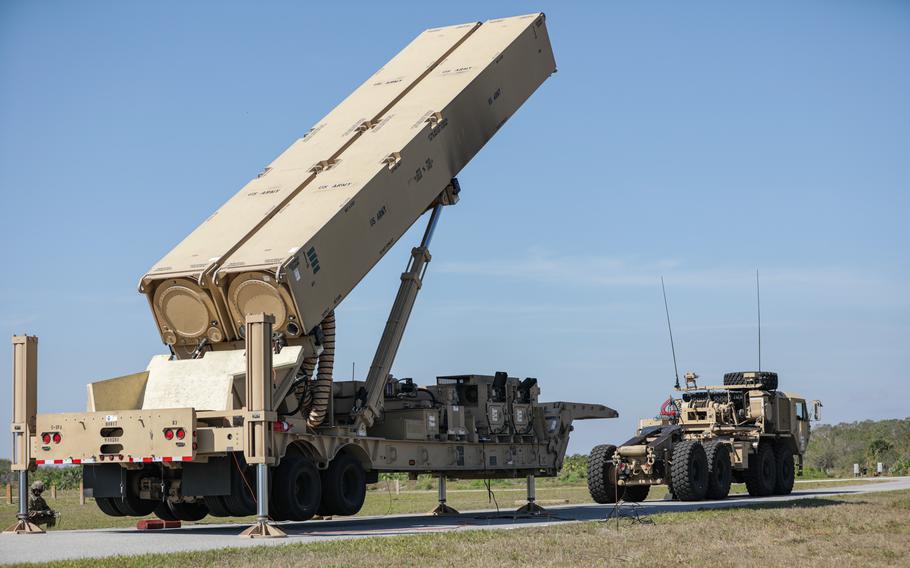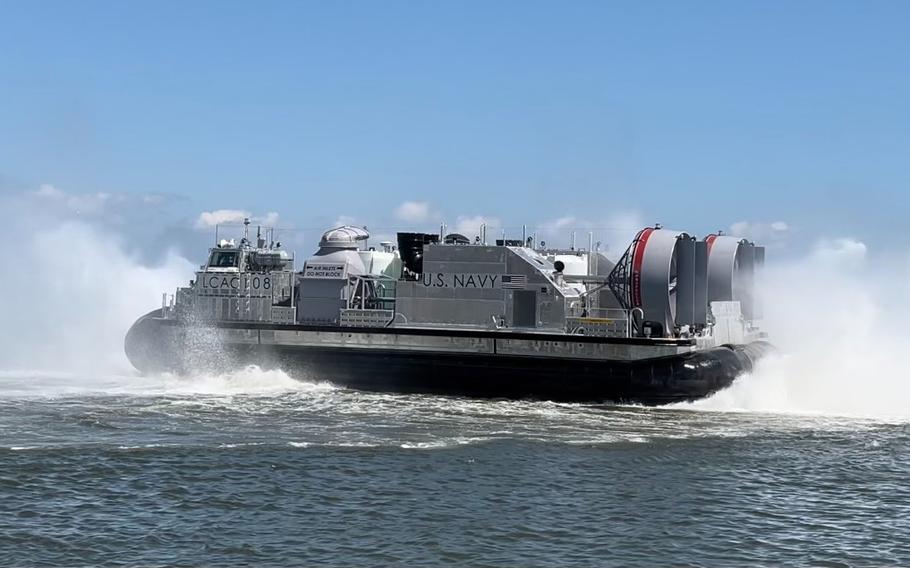
A U.S. soldier lifts the hydraulic launching system on the Long-Range Hypersonic Weapon during testing at Cape Canaveral Space Force Station, Fla., March 3, 2023. (Chandler Coats/U.S. Army)
The U.S. military takes too much time to get new weapons in the hands of troops and needs “a wholesale shift” to maintain its edge, a federal watchdog agency said this week.
The Defense Department “remains alarmingly slow in delivering new and innovative weapon system capabilities, even as national security threats continue to evolve,” the Government Accountability Office said in its annual report on weapons systems, which was released Monday.
The report highlighted the risks posed by artificial intelligence, autonomous systems and China’s growing capabilities.
The GAO examined more than 100 of the Pentagon’s most expensive weapons, which together are expected to cost more than $2 trillion to develop and acquire.
The average major acquisition program takes more than a decade for a system to be fielded in its initial phase, “a time frame incompatible with maintaining military advantage in an environment shaped by the needs of technological advantages,” the report said.

The Navy's next-generation landing craft No. 108 from Textron Systems, shown here during acceptance trials in September 2023. A Government Accountability Agency report this week cited the ship program as an example of the slow way in which the Pentagon acquires weapons systems. (U.S. Navy)
The agency did credit the DOD for working on making its processes more efficient.
Meanwhile, combatant commanders are developing smaller units built to function more like a technology startup company.
For example, the Navy’s Task Force 66 in Italy rolled out recently to develop drones and other technology, while the Air Force has similar goals at its Task Force 99 in Qatar.
Nevertheless, the GAO report follows long-standing concerns that the Pentagon acquisition process is overly bureaucratic.
Several programs have lagged since last year’s report.
The Army’s Improved Turbine Engine Program has seen the longest delay. The next-generation turboshaft engine for the Black Hawk and Apache helicopter fleets has been pushed back 21 months because of staffing issues and delayed flight testing, the report said.
Meanwhile, the Navy’s Ship to Shore Connector Amphibious Craft — an air-cushioned landing craft for transporting personnel, weapons, equipment and cargo from amphibious vessels to shore — was delayed reaching initial operating capability by 15 months because of testing problems.
And the Army won’t be able to field its first battery with the Long Range Hypersonic Weapon System until at least fiscal year 2025 because of unsolved problems with the launcher and sequencing, the report added.
The hypersonic missile is billed as traveling at least five times the speed of sound and able to strike targets more than 1,700 miles away while evading air defenses. China and Russia also are developing hypersonic weapons.
Meanwhile, software has become one of the most important components of weapon systems and the military’s ability to compete is determined increasingly by how rapidly it can develop and deliver software-intensive systems, the GAO said.
However, DOD programs often have struggled to hire and retain people with sufficient software expertise, according to the report.
The DOD responded that it mostly agreed with three recommendations by the GAO to improve development practices.